Welcome back to another DC History. In the wake of the New 52, we’re looking at the history of some of the people and groups being reintroduced to the DC Universe. Only by looking back at what came before can we understand where we’re going.
This week, we’re looking at the Hal Jordan, the second person in the DCU to be known as Green Lantern and the first Earth-born member of the Green Lantern Corps.
There’s an awful lot of Hal Jordan history. After all, the character has been appearing in comics every month since he first debuted in 1959’s Showcase #22. There are whole swatches of stories that I’m not going to delve into, including his early adventures, which can be found in the black-and-white Showcase Presents: Green Lantern series and the colored Green Lantern Omnibus series. Also not on the docket are the legendary Green Lantern/Green Arrow hard-traveling heroes tales. They’re good too, so check them out. What we’re going to be discussing here are the Hal Jordan tales found after the Crisis on Infinite Earths. So get ready for the DC History of the modern-ish tales of Hal Jordan!
Hal’s origin story has been told several times. It’s all pretty standard stuff. Abin Sur, the Green Lantern of Sector 2814, died and gave his ring to Hal Jordan. Hal, a hotshot pilot, knew no fear and had great willpower, the only two things that a Green Lantern needs. When he wore the ring, Hal became a space cop, defending both Earth and the entire universe against threats both large and small. In the late 1980s, Hal got a thorough retelling of his origin in a pair of miniseries, Emerald Dawn and Emerald Dawn II. Hal’s journey from Lantern beginner to being the greatest Lantern in the universe was well told in these miniseries. Better yet, they also showed the look on Hal’s face when he first learned he can fly.
Shortly after the Crisis on Infinite Earths, Hal and his supporting cast were in a transition phase. The Guardians of the Universe, the beings who had created the Green Lantern Corps, were gone. They’d left the known universe to mate with the Zamarons, another race of intergalactic aliens. When the Guardians returned, they charged Hal with reinvigorating the Corps, which had been devastated during the Crisis and its aftermath. Hal, being the good solider he was, agreed. While Guy Gardner kept watch over Earth, Hal spent most of his time in deep space.
It was because of this assignment that Hal would find the gravest personal tragedy of his career: The destruction of his home town, Coast City. With Superman dead and Hal off in space, the Cyborg Superman and his crony Mongul obliterated Coast City and its millions of inhabitants. In its place, they built Engine City. Their goal was to do this to every city on the planet and create a mechanical world that the Cyborg and Mongul controlled. When Hal got back to Earth, he was enraged.
Hal beat Mongul down while a newly arisen Superman took out the Cyborg. Engine City was dismantled, leaving behind nothing but bare, dead ground where a once thriving city had sat. The rest of the heroes of the DCU just left at this point. They made some lip service about being there if Hal needed anything, but no one bothered to hang around the poor guy to see how he was handling himself. This was a mistake. Hal, in his grief, used his ring to create a green, ring-powered version of Coast City. He even populated it with his memories of the people who used to live there. The Guardians, shocked at this selfish use of his ring’s power, told Hal that he needed to report to Oa for a trial on the misuse of his ring. Instead of coming quietly, Hal flew off into space to discuss his feelings with the Guardians.
It was at this point that Hal became unhinged. He blamed the Guardians for what happened to Coast City. If they’d let Hal stay on Earth like they were supposed to, he could have prevented the massacre. Even after that failure on the Guardians’ part, they had the gall to not allow him to use the ring to help him get over the loss. It was too much for Hal to bear.
This new found rage of Hal’s worried that Guardians so they sent several waves of Green Lanterns to stop Hal before he reached Oa. These were Lanterns that Hal had personally selected and trained in the previous years. He killed or maimed them all.
Things got even worse once Hal hit Oa. The Guardians released an imprisoned Sinestro in one last bid to defeat Hal. Both Hal and Sinestro took off their rings for the fight and after a knock-down brawl, Hal broke Sinestro’s neck. It was after this that Hal reached his lowest point. Kilowog, Green Lantern drill sergeant and fan favorite character, tried to stop Hal from sucking in all the power contained in the Central Battery. Hal burned Kilowog to death with his ring.
With that final act, Hal entered the Central Battery of the Green Lantern Corps and internalized all the power within it. He then called himself Parallax and disappeared into space.
He wouldn’t be gone long. Shortly after the destruction of the Green Lanterns, time began to shift. Time periods began to overlap with one another causing panic and fear among everyone in the DCU. The distant future and the distant past started disappearing and this time entropy culminated in 1994. Just as the entirety of space and time collapsed, Hal showed himself to his old allies, admitting that he was the source of the time crunch.
Instead of simply trying to recreate Coast City using the Green Lantern energy, Hal wanted to remake the world so that it simply had never been destroyed. While he was at it, he’d fix other errors of the universe, like Barbara Gordon becoming paralyzed and Bruce Wayne’s parents being killed. Hal had convinced himself that in order to save the universe, he first had to wipe it clean. At the last moment, Kyle Rayner, the last Green Lantern in existence who had been given Hal’s old ring, took a weakened Hal out of the fight and the universe was able to be reset normally.
Hal as Parallax continued for the next few years. He’d show up here and there, rambling about how things weren’t right and how he needed to fix them. For a guy with almost unlimited power, he seemed to be beaten a lot. The limits of Hal’s power would finally be shown two years later.
During The Final Night, an alien menace came to our solar system. That’s not a big deal. It seems to happen all of the time. However, instead of attacking Earth, this alien attached itself to the Sun and began to ingest it. The Sun began to lose power. Everything that the heroes threw at it did nothing. Finally, Hal Jordan came back to Earth just long enough to unleash his entire power again the Sun-Eater, killing both it and himself. It was a redemption through fire.
Hal Jordan was dead.
But this is comics, so that means that Hal would be back sooner or later. Turns out, it was sooner.
In the DCU, the Spectre is a biblical force of nature. He is the embodiment of God’s vengeance. In order to keep this spirit in line, he is always tied to a human host. For decades it was Jim Corrigan but Jim moved on to his final reward in the late-1990s. That left Spectre completely uninhibited. With no moral compass, the Spectre ran wild and was even taken over by a fallen angel. Earth’s heroes needed a new host for the Spectre. This new host needed two things: to be dead and to be able to exert great willpower. After Jim Corrigan turned down the offer to once again be the Spectre, Hal Jordan was brought out of limbo by a coalition of heroes. Batman wasn’t happy with this choice.
Kilowog would have been a choice everyone could have rallied behind but this story just proves how xenophobic Earthlings are.
Over Batman’s objections, Hal’s soul eventually fused itself to the Spectre. For the remainder of his time as the Spectre, Hal would struggle to keep the natural forces within himself reigned in. His own guilt about the genocide he’d committed against the Green Lanterns didn’t help. Still, he did his best to make up for the past.
Hal returned to the land of the living during the events of Green Lantern: Rebirth. There it was revealed that Parallax was actually a cosmic entity that had infested Hal’s brain and made him destroy the Green Lantern Corps. After an internal struggle, Hal was able to divest himself of both the Parallax persona and the Spectre. Somewhere along the way, he was also brought back to life. Unfortunately, so was Sinestro.
With Hal’s return came the return of the Green Lantern Corps. Now that Parallax was defeated and Kyle Rayner had restored the Central Battery to Oa, new rings were made and sent out across the universe. Rookies came to Oa for training and a recently resurrected Kilowog was on hand to deal with them. Hal’s guilt about his actions as Parallax faded even more when he learned that, for the most part, people didn’t know what he’d done.
Hal’s adventures continued as they had done before the Green Lantern genocide. He was mostly spending his time in space, dealing with cosmic threats like Sinestro, who had developed his own Corps. During this time period, the Green Lanterns found out that there were other colors of Lantern Corps throughout the galaxy. Hal seemed to be having a grand time mixing and matching every kind of ring that he came into contact with. He even managed to combine the powers of the Green, Blue, and Orange Lanterns in one memorable adventure.
For the rest of this series, Hal would continue to have adventures with, and fight against, the many different colors of the various Lanterns.
Where is Hal Jordan in the New 52? He’s still in his own title, which didn’t get rebooted at all except for the volume number. The best part of this new volume is seeing Hal being a sad sack on Earth, stripped of his Green Lantern ring by the Guardians. Having not had to do anything on Earth in years, Hal is pretty socially inept even with a fellow Lantern like his ex-girlfriend Carol Ferris.
I wish the entire story was just Hal bumming around the rebuilt Coast City, awkwardly asking passersby how to fill out a check and where a cheap cell phone could be purchased. Perhaps we’ll get that in the next reboot.
Jeff Reid is as surprised as you are that Zero Hour was mentioned during one of these articles. Sometime, remind him to tell you the story of Power Girl’s baby that she had during that event. Until then, follow him on Twitter.

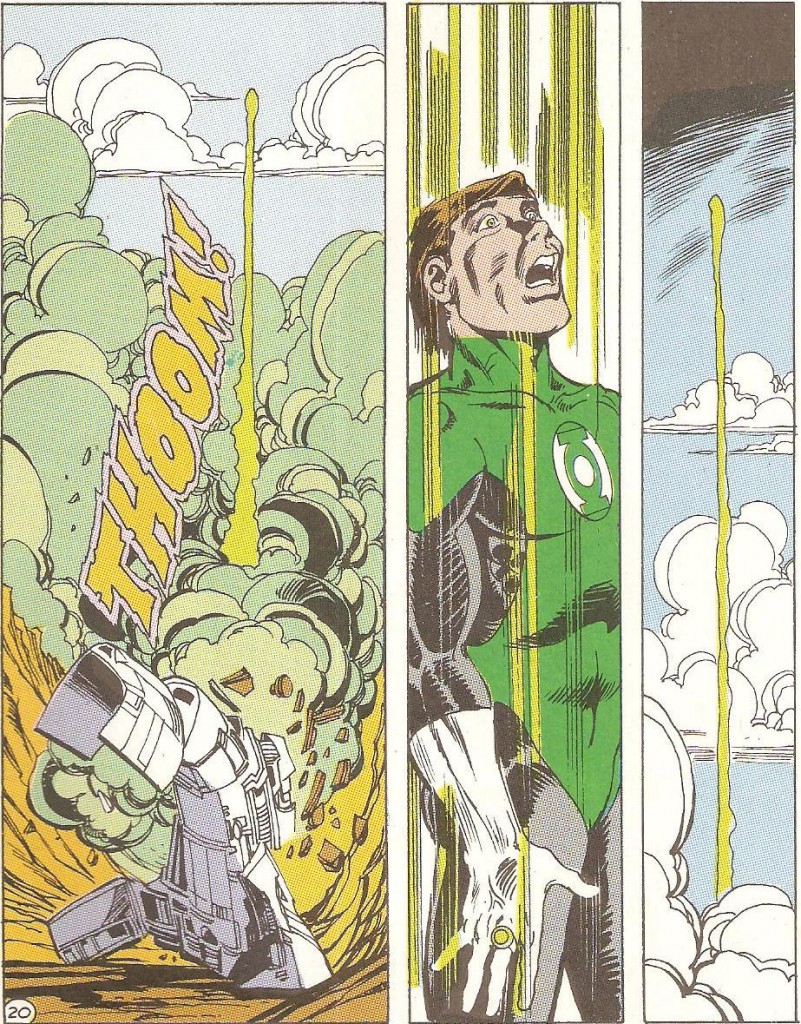
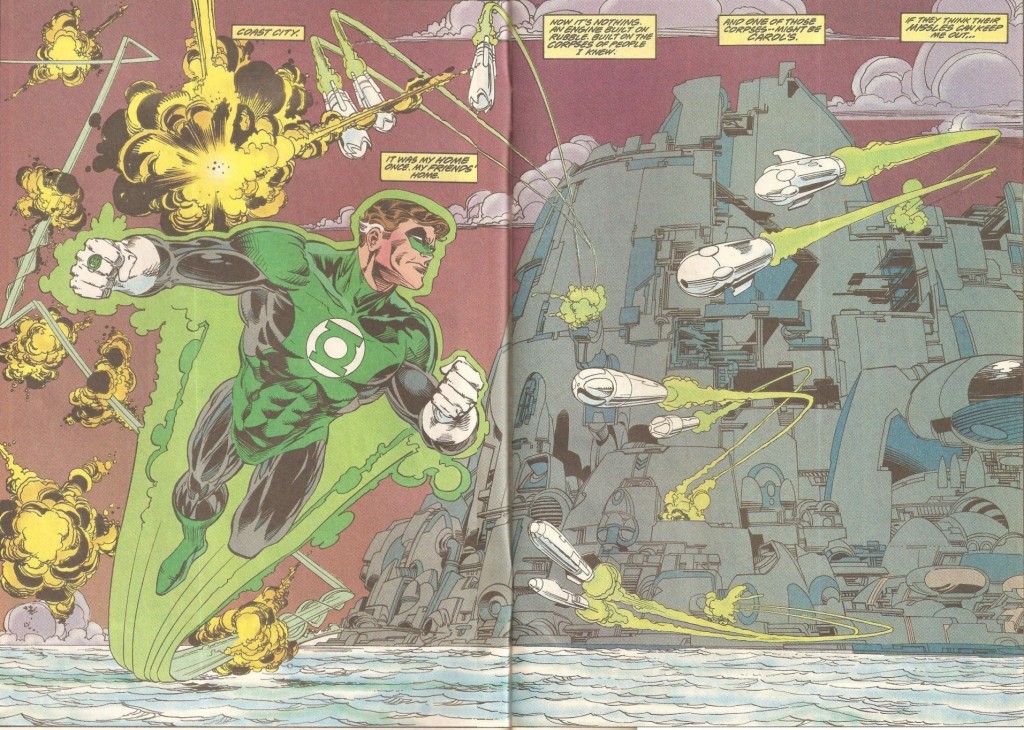
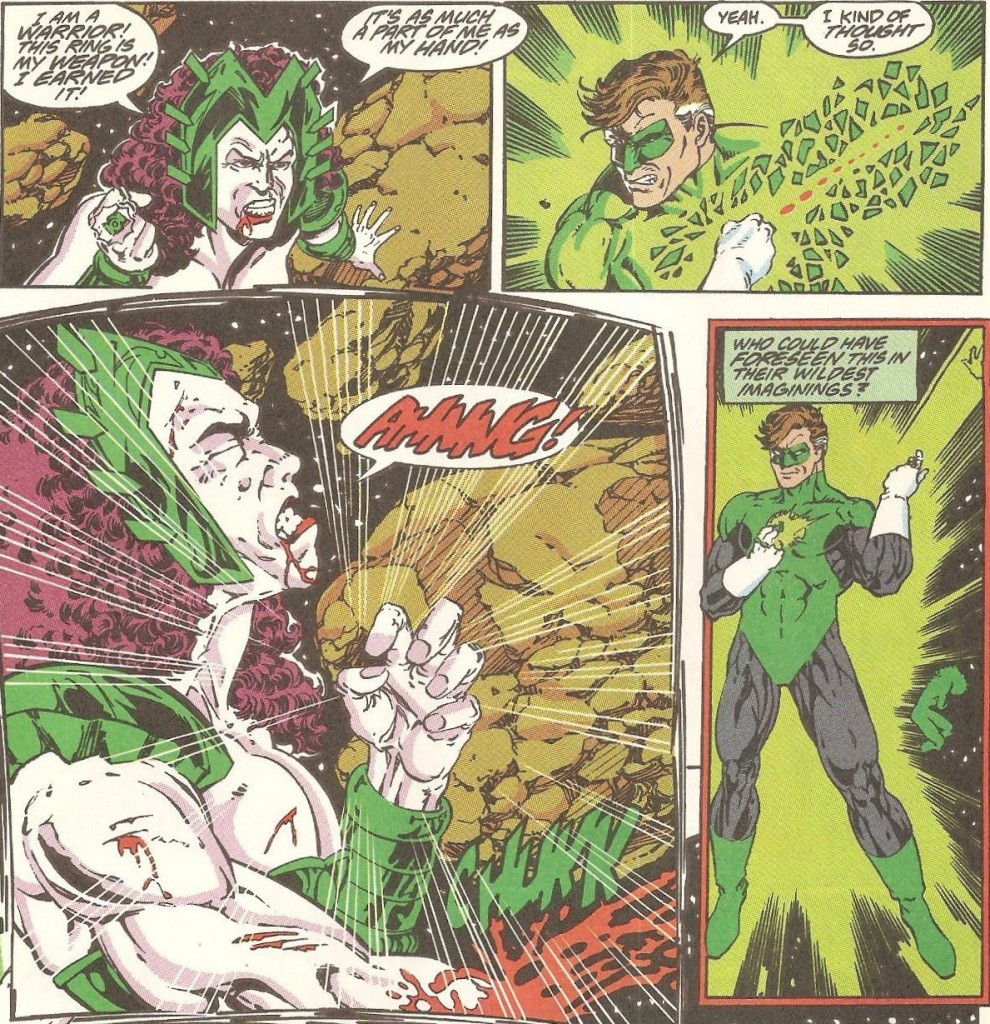
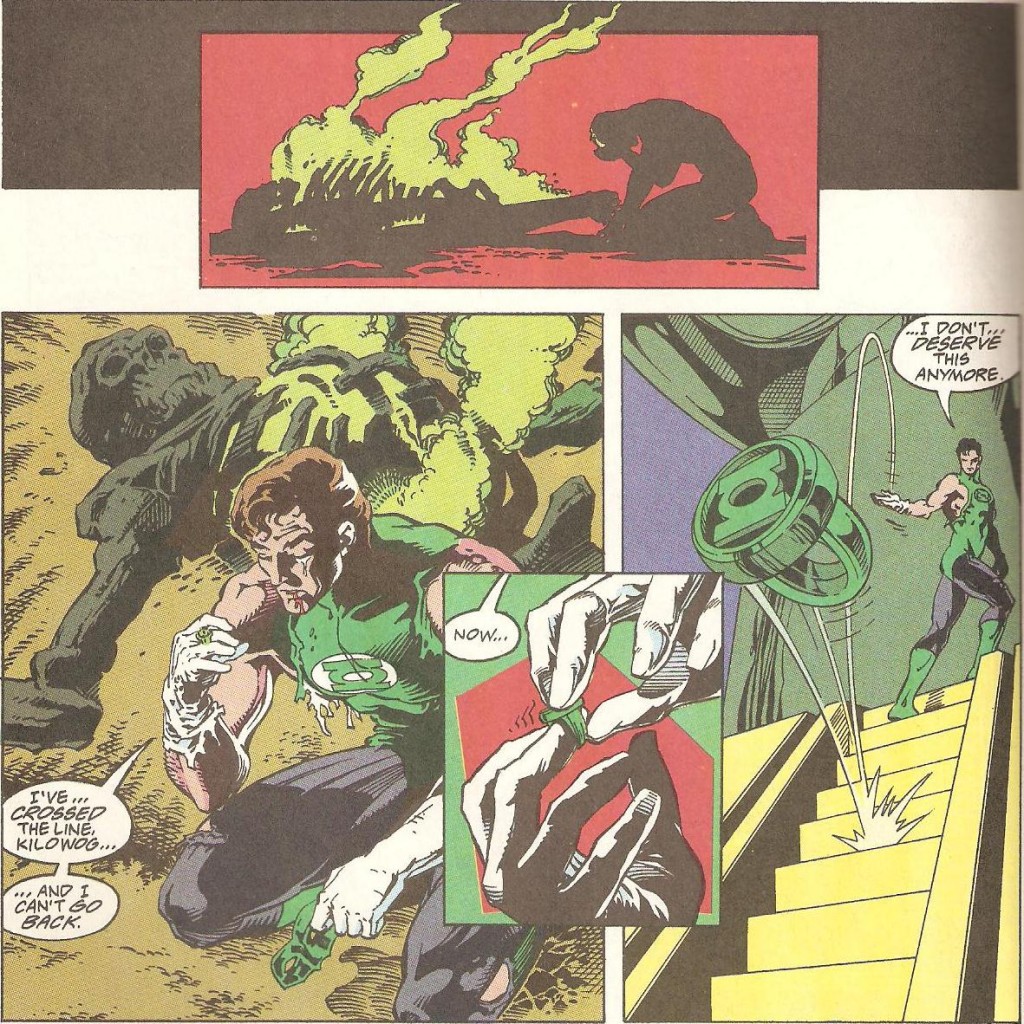


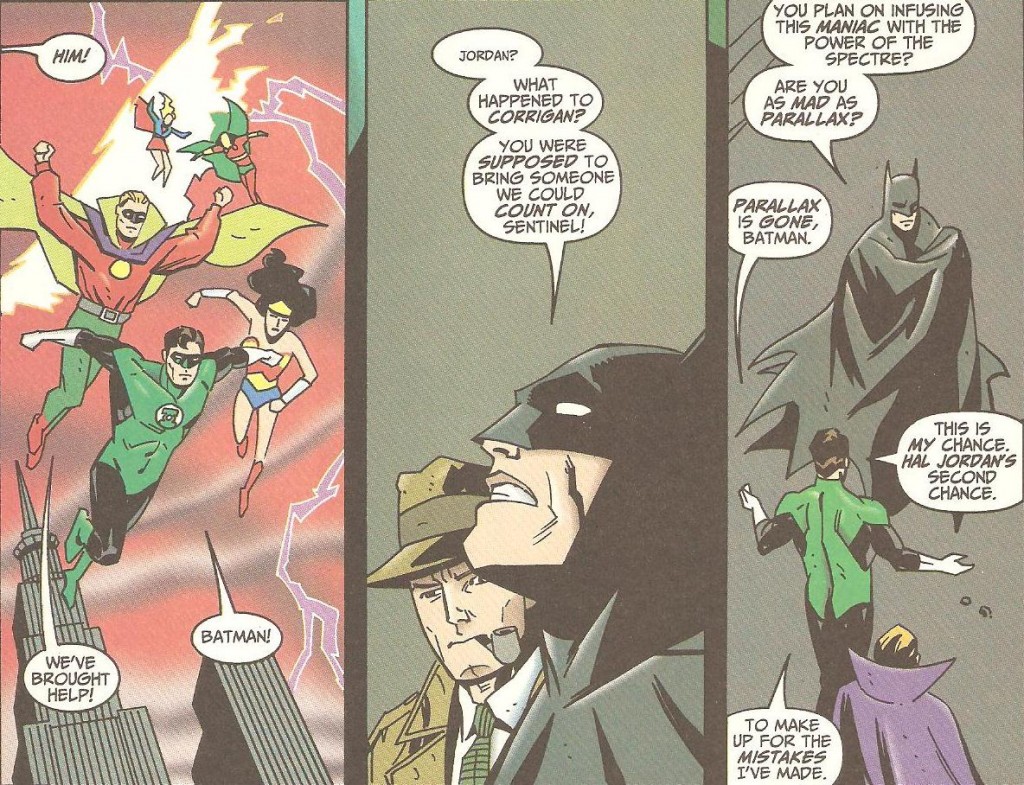
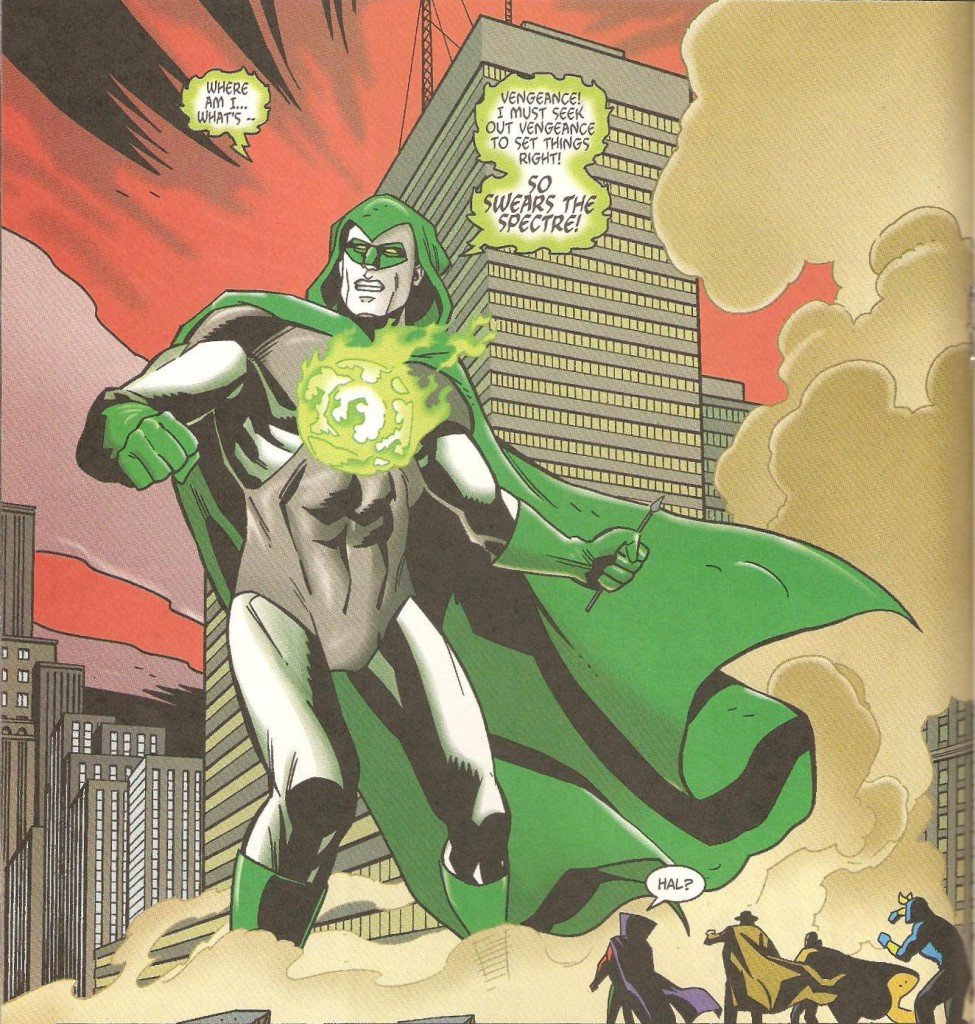

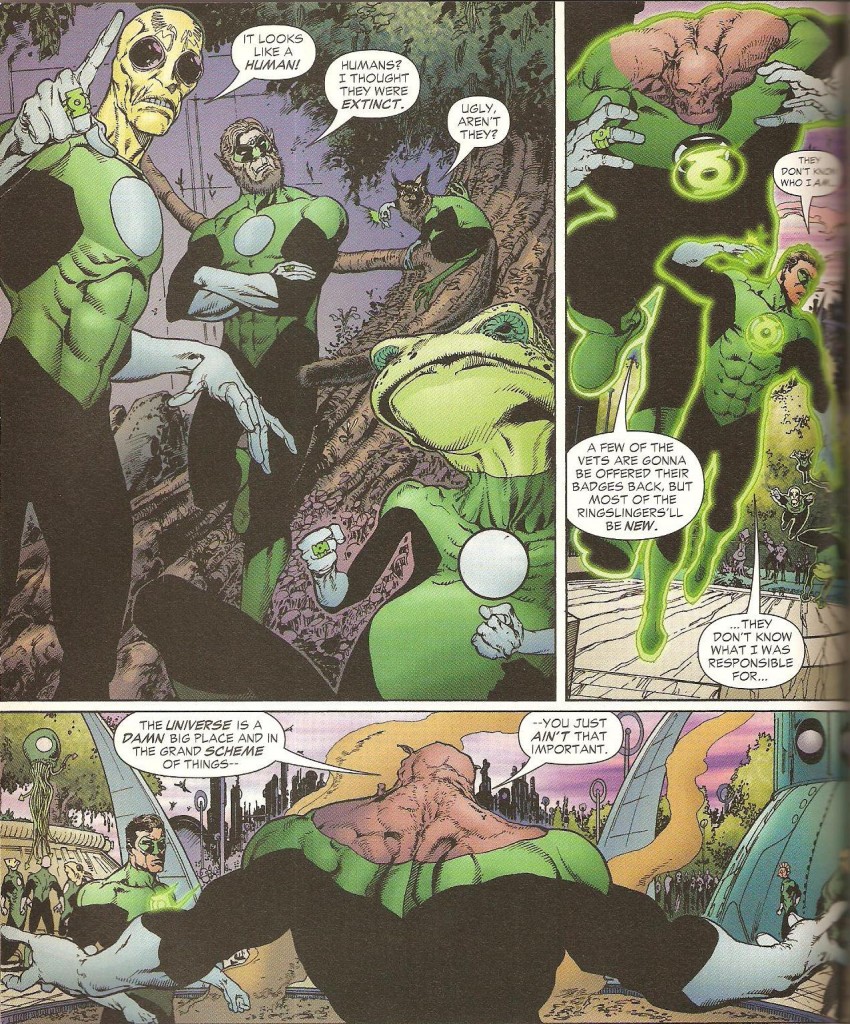
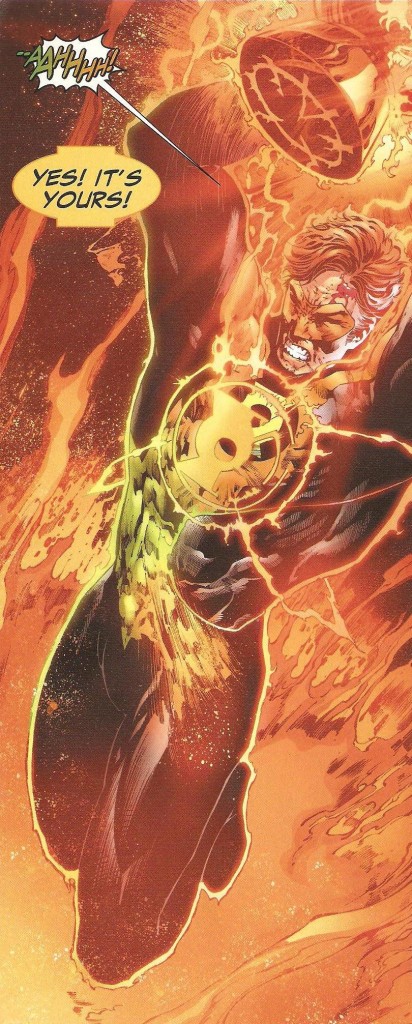



I think the biggest curiosity about Hal Jordan’s history was concerning his time as Parallax. Not the fact that he became Parallax, mind you. I totally buy that. It’s just the fact that he made little-to-no impact as a character during that time. You mentioned his two defining moments as the villain: his role in the face-rippingly crazy crossover Zero Hour, and his sacrifice during the much better Final Night. It seems like his biggest moments were his creation and demise, with next to nothing substantial in the middle.
It should be noted that Day of Judgement, the event where Hal becomes The Spectre, was actually written by Geoff Johns. It’s also pretty great. I remember liking it a lot.
Final Night is also a great read.
I wish they had retained some of the ideas from Emerald Dawn I/II in the GL movie. They should have had Sinestro train him and have Hal discover the fascist state he created on Korugar. That would have given much more of a case for him becoming a bad guy – but then again, I wish they had done a LOT different in that movie. I thought the DWI thing was goofy though.
I really liked Hal as the Spectre. It was a weird, wild, Vertigo-esque series that made him likeable again.